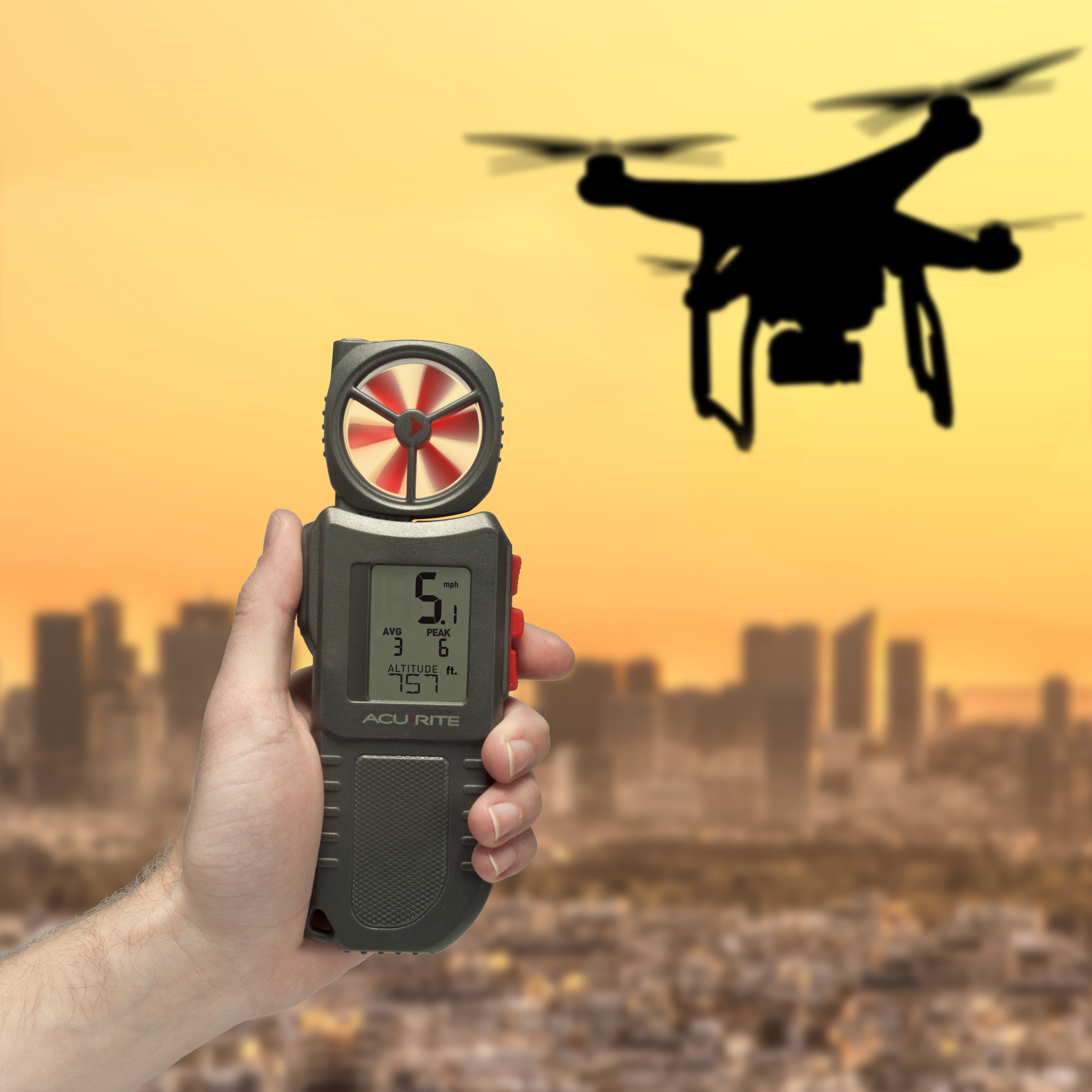How Does an Anemometer Measure Wind Speed?
The first anemometers were developed centuries ago, and have taken a variety of forms. Over time, scientists learned what configurations work best, and because of this knowledge, the most common designs nowadays tend to either incorporate spinning wind cups or propellers.
Wind Cups - Many weather sensors employ a three-cup configuration that spins on a horizontal plane as the wind passes through it. The horizontally-arranged three-cup design works extremely well because it can measure wind speed no matter what direction the wind is coming from. Testing has shown over the decades that three-cup designs generate a higher and more consistent amount of torque, and respond to wind gusts more quickly than other cup configurations. In addition, aerodynamically-optimized cups capture the maximum possible amount of wind force on the open side, propelling the cup forward, while the streamlined front of the cup slices through the air as it goes through its rotation. The wind cups also offer a dual bearing design to eliminate shaft flex and wobble, which can compromise accuracy.
As the wind cups spin, they turn a small drive shaft with a magnet positioned at the bottom end. The magnet passes over an electrical sensor called a reed switch. When exposed to a magnetic field, two tiny metal reeds are joined together, completing an electrical circuit. Each time the circuit is completed, an electrical impulse will be sent to a digital processor. Based on the frequency of the impulse, the processor can calculate a wind speed reading.
Propellers - The propeller design, such as used for portable handheld anemometers, operates on a vertical plane, requiring the user to manually face the anemometer in the direction the wind is coming from. As the propeller spins, it also causes a magnet (located at the center of the propeller) to rotate. Nearby, a small magnetic field sensor detects this rotation, passing on electrical impulses to the anemometer’s processor. The frequency of the impulses is translated to a wind speed reading.

What is an Anemometer Used For?
Anemometers have two primary applications:
- Weather Observation – Along with temperature, humidity, barometric pressure, rainfall, and wind direction, the measurement of wind speed is vital to observing, understanding, and predicting the weather. As such, a higher end weather station will typically feature an anemometer in its sensor suite.
- Measuring Airflow – While anemometers are overwhelmingly used for weather observation, it’s also common to position a small anemometer inside or in front of ducts, vents, and other locations to get a reading of how fast air is circulating.
Why Is It Beneficial to Have an Anemometer?
Benefits, depending on how you use your anemometer, can include safety, protection of personal property, home improvement, property management, and getting the most out of your favorite recreational activity such as finding the best wind conditions for boating or ideal wind conditions for golfing.
- Safety – Knowing the wind conditions in your exact location can have many benefits toward keeping your family safe. An anemometer informs you of high wind levels, right at your home, golf course, construction site, and more.
- Protection of Property – In addition to keeping your loved ones out of harm’s way, reliable wind speed readings and timely high wind alerts can give you a chance to bring down hanging plants, pull patio furniture inside, and attend to other things around your home before damage occurs.
- Golf, Boating, Drones and Remote Control Aircraft, Etc. – Reliable wind speed readings can help you better enjoy hobbies directly affected by wind. Keeping a wind meter on hand at the marina, on the fairway, and more can provide vital information to help you make better decisions when enjoying your favorite activity. It can also help you know when conditions dictate that it’s better to pack things up and go home.
- Adjusting Heating and Cooling Systems – Placing an anemometer in front of, or inserting one into a duct, vent, etc. can let you measure the airflow, which is helpful in optimizing the performance of a home or commercial heating and cooling system. An anemometer can also have similar uses in automotive, or any other instance where you need to measure the circulation of air.
- Storm Spotting and Storm Chasing – Working with organizations like SKYWARN and the National Weather Service, our nation’s network of citizen storm spotters and storm chasers provide a vital, “eyes on the ground” service, helping keep our communities safe during severe weather events. Among the weather readings spotters and chasers need to relay to authorities, the ability to measure wind speed is often the most important.
- Watching the Weather – More and more people are discovering the joys of being their neighborhood weather expert. As any weather buff knows, there are a variety of conditions to keep tabs on, and having a wind speed meter that delivers reliable readings is a vital part of any weather station’s sensor suite.
Related Articles
Related: What Is a Wind Vane?





